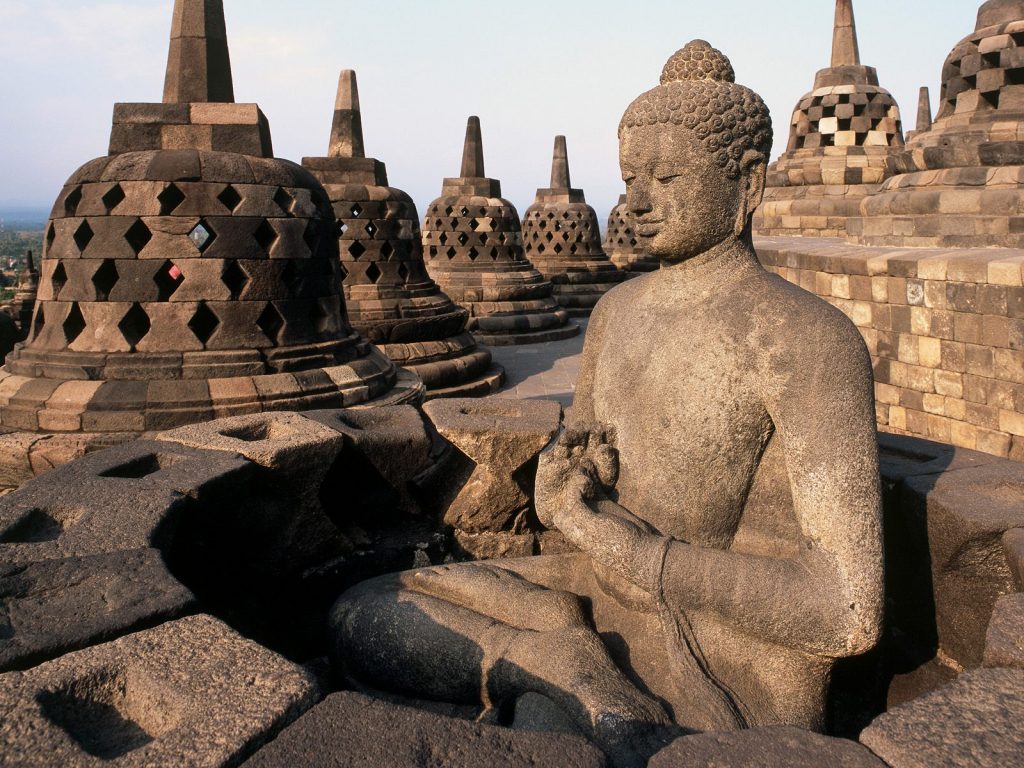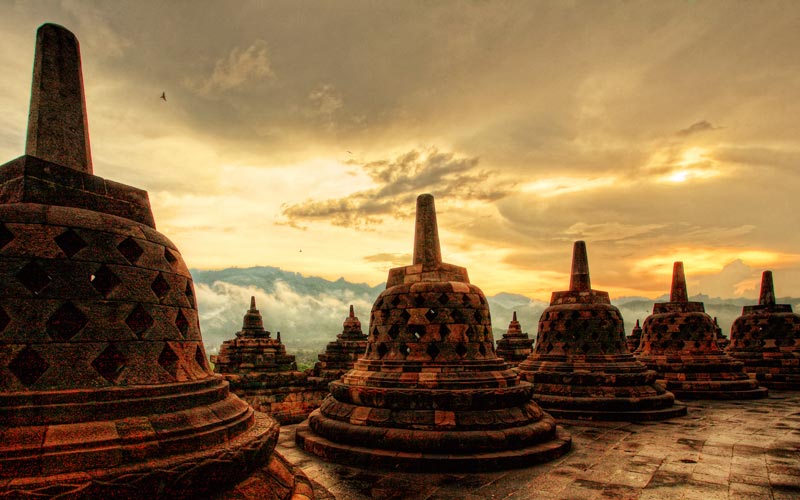Buddha Statue on Borobudur Stupa
Uday k Chakraborty writes about rich in culture Yogyakarta which is enlightened with some of the world’s greatest monuments
Yogyakarta (Pronounced Jogjakarta or simply Jog-ja) is the centre of Javanese arts and culture. Here is a bustling regional capital of Java with great character that hosts some of the world’s greatest religious monuments and is full of myriad touristic delights.

Borobudur –Buddhism’s greatest edifice
On first sight what impressed me about Borobudur were not its size, but its symmetry (a very deceptive symmetry, as I discovered) and its settings. And, yes I was also overwhelmed by the statistics. Borobudur is the largest religious building in the southern hemisphere, constructed more than a millennium ago, without mortar, with 1,600,000 stones fitting into one another. It has almost five kilometers of carvings, 2,000 beautifully sculpted panels along its galleries and hundreds of Buddha images.
Best time to visit Borobudur is early dawn. At that time silence and peace of the setting is awesome. The mist hangs off the palmtrees, the dew glistens on the grass, and the far away volcanoes are dark silhouettes. Now the slate-grey stones of Borobudur are glowing with pink and the mass seems far larger. The pink turns to rose, and then the light changes to gold, and the stupa changes with it. And, the Borobudur looks magnificent and slightly foreboding as I begin to climb.
The carvings and bas reliefs in stone depict the Great Wheel of Buddhism in three stages or three states. First is the world of desire and the senses. Then is nature, earthy form, the Buddha on earth. And finally, the world beyond form, the world of perfect nothingness. So, each higher terrace suggests the gradual disappearance of the need for sense.

Sculptures on the lower terraces are astonishing: the story of the birth of the Buddha, the Queen relating her dream, the life of the Buddha and the gods, of course Buddha’s confrontation with the old man, the poor man and the dead man, his enlightenment…These are the inner walls. On the outer walls are panels without end with its plethora of real and mythical animals, its symbols of flowers and clusters of abstract designs hints of a secret world – heaven, hell or somewhere in-between… who knows.
At the highest terrace the panels have disappeared. The material world has gone. Instead one finds seventy-two miniature stupas with latticed windows and statues of Buddha inside each of them. For luck, one should reach in an attempt to touch each Buddha statue. On the very top, the main stupa is placed on a double lotus. The stupa is closed. Inside is an empty space that may – or may not – have held a statue or a relic.



0 Comments